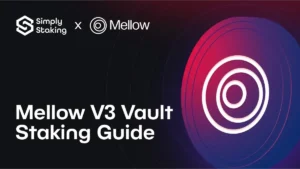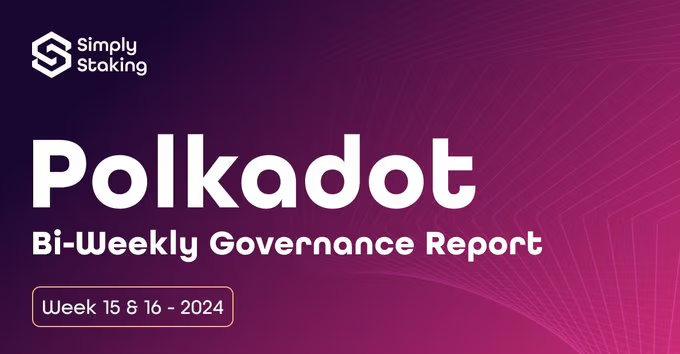The Challenges of Blockchain Scalability
As blockchain technology has evolved, so has the diversity of its networks, each developed for specific purposes and operating independently of one another. This diversity, while a strength, also presents a challenge — how to enable these distinct blockchains to communicate and share data or assets securely and efficiently. Not only does greater interoperability enhance the functionality of decentralised applications (dApps) by allowing them to access a broader range of assets and services, but also contributes to a more integrated and synergetic ecosystem. As such, interoperability is essential for driving continued growth, practical application and unlocking the full potential of blockchains; enabling different networks to interact seamlessly and leverage the unique advantages of each without creating isolated silos.
You might be interested in these articles:
- Introduction to Polkadot Jam
- Outlining the Vision for Polkadot 2.0
- Polkadot 2.0: Transitioning to Coretime as a Service
- Polkadot Staking: How to stake on Polkadot
- Polkadot Staking APR
Nevertheless, scalability remains a significant hurdle in an industry where most traditional blockchains still operate on a single-threaded system, which restricts the volume of computation they can handle at any given time. For simplicity, we might draw an analogy to single-lane roads going through a small town; they can only handle so much traffic before congestion slows everything down.
When it comes to verifying transactions, there are also challenges present. Typically, ensuring a transaction is legitimate involves a series of complex steps — validating state proofs, consensus proofs, confirming state transitions, and so on.
State Proofs are essential components of the blockchain infrastructure that facilitate trustless interactions, like bridges, by allowing off-chain light clients to securely access on-chain data. These are especially significant in architectures where execution layers are distinct from the consensus layer, ensuring that operations remain trustless and permissionless.
Consensus Proofs represent the collective agreement among network validators on the network’s transaction history and current state, attesting to the validity of a block header.
It’s comparable to having multiple checkpoints, each requiring thorough inspection that, while necessary for security, can lead to a bottleneck, especially when multiple blockchains try to communicate with each other. The sheer amount of computational work needed for these verifications can get quite resource-intensive and costly when performed directly on the blockchain (i.e., on-chain). Not only does this put stress on the blockchain’s resources but tends to also drive up the associated costs of transacting on the network, making it an inefficient process at scale.
The essence of the problem is clear: on-chain processing has its limits. To build the blockchain highways of the future, capable of handling the ever-increasing traffic of digital assets and information, we need a more scalable and cost-efficient approach. The need for improved scalability and efficiency without compromising on security has seen plenty of developments on multiple fronts, one of which is Hyperbridge.
Introducing Hyperbridge
As a hyper-scalable bridge leveraging the consensus mechanism and shared security of Polkadot, Hyperbridge is one of the latest significant innovations to come out of the Polkadot ecosystem seeking to address the challenge of cross-ecosystem interoperability. Built as a coprocessor and standalone parachain by the Polytope Labs team, Hyperbridge uses blockspace on Polkadot to function as a decentralised bridge to and from Ethereum L2s like Optimism, Arbitrum, Base, as well as Binance Smart Chain, among other ecosystems, and allows native asset transfers and messaging between chains with minimal hacking risk.

At its core, Hyperbridge leverages the power of trustless technology to allow for autonomous verification of transactions without the need for intermediaries along with cryptographic proofs to ensure the authenticity and integrity of cross-chain communication. Hyperbridge’s cross-chain asset transfer protocol, Gateway, exemplifies this trustless model by facilitating asset transfers across connected chains through a blend of permissioned mint-and-burn mechanisms and ERC-20 token swaps and without hacker-prone, centralised liquidity pools. These operations are supported by Hyperbridge’s permissionless network of relayers, who holds the assets and deploy cryptographic proofs to maintain the protocol’s decentralised and secure architecture.
All in all, Hyperbridge has been designed to scale cryptographically secure, consensus, and state-proof-based interoperability across all blockchains and their respective ecosystems. In the remainder of this article, we will look into the specifics of Hyperbridge, covering its operational framework, the technological underpinnings that enable its functionality, and explore how Hyperbridge fits into the current and future landscape of cross-chain interoperability.
Technical Foundation of Hyperbridge
Hyperbridge as a Polkadot Parachain
Hyperbridge has been developed with Substrate, Polkadot’s SDK framework, which offers the flexibility and modularity necessary for creating customised parachains; enabling Hyperbridge to inherit Substrate’s inherent benefits such as upgradability, high-performance, and robust security features. Having recently secured a slot on the Polkadot Relay Chain, Hyperbridge is set to launch as a Polkadot parachain.
Operating as a parachain gives Hyperbridge direct access to the Relay Chain’s shared security with the assurance of Polkadot’s overarching governance and consensus architecture, meaning that transactions executed through Hyperbridge benefit from the same level of security and finality as any native Polkadot transaction. Given that Polkadot at its core has been designed to enable different blockchains to transfer messages and value in a secure and trust-free fashion, Hyperbridge aims to capitalise on this by using Polkadot’s consensus layer to validate the state and transitions of multiple chains, which is crucial for maintaining security across the ecosystem.
The process is facilitated by a system known as BEEFY (Bridge Efficiency Enabling Finality Yielder), which is part of Polkadot’s suite of consensus protocols. BEEFY is specifically geared towards providing finality for cross-chain communications. It works alongside the existing GRANDPA (GHOST-based Recursive ANcestor Deriving Prefix Agreement) consensus mechanism to ensure that once transactions have been verified, they are final and irreversible.
In practical terms, this integration means that Hyperbridge can use the shared security of Polkadot’s network to perform cross-chain functions; ensuring that the cross-chain messages not only benefit from the high economic security of Polkadot but are also processed efficiently.
Integrating with Polkadot’s XCM Protocol and ISMP
Launching as a parachain also means Hyperbridge can leverage Polkadot’s Cross-Chain Messaging (XCM) protocol to standardise communication between parachains and the main Relay Chain. XCM, designed to be flexible and generic, facilitates a wide variety of messages, including asset transfers, smart contract calls, and governance proposals among parachains and external chains.
Alongside XCM, a critical component underpinning Hyperbridge’s capability for efficient cross-chain communication is its Interoperable State Machine Protocol (ISMP). ISMP provides a streamlined, HTTP-like API that allows developers to easily initiate cross-chain requests, facilitating not just asset transfers but also the execution of complex logic across different blockchain networks.
ISMP distinguishes itself with its ability to integrate various contract environments, including Substrate pallets, EVM contracts, and Ink! (Wasm smart-contracts), as well as multiple consensus clients, promising broader compatibility and versatility across blockchain architectures. By dedicating one core to processing consensus proofs and another to user requests and responses, Hyperbridge leverages ISMP for multi-threaded workload distribution across cores to improve scalability. Hence, the ISMP acts to expand the possibilities for innovative use cases and applications in the DeFi, gaming, and broader blockchain sectors.
To enable interoperability to and from chains outside of Polkadot’s Substrate ecosystem, Hyperbridge employs specialised smart contracts, or “bridging contracts,” to map and translate transaction calls from external chains into a format compatible with Polkadot’s runtime environment. This, combined with the capabilities offered by ISMP, allows Hyperbridge to leverage an advanced network designed for cross-chain communication with strong security and the ability to handle a larger volume of transactions across various blockchains.
Enhancing Interoperability and Functionality with Parachain Cores
Another key aspect of Hyperbridge’s architecture is its innovative use of Polkadot parachain cores, which significantly enhances its interoperability and functionality capabilities. These features include:
- Data Availability for Ethereum Rollup Transactions: Hyperbridge leverages its parachain cores to improve data availability for Ethereum rollup transactions, a critical component for Ethereum’s scalability, ensuring that data required for transactions within rollups is readily accessible and efficiently and reliably processed.
- Ethereum and Polkadot Integration: By facilitating Ethereum’s access to Polkadot parachains for data storage and processing, Hyperbridge extends a new level of interoperability between these two leading blockchain ecosystems; offering Ethereum dApps the potential to leverage the scalability and efficiency of Polkadot’s network.
- Parachain Coprocessors: Hyperbridge enables the use of Polkadot parachain cores as coprocessors for diverse functionalities, including identity verification and on-chain DAO voting, optimising processing efficiency and broadening the scope of possible dApps.
- Verifiable Oracle and Execution of View Functions: An essential feature of Hyperbridge is its capability to execute view functions across chains, acting as a verifiable oracle that supports a wide range of use cases; from DeFi to applications requiring trusted cross-chain information, by providing verified data from one blockchain to another. Ensuring the integrity and authenticity of this data enhances the reliability of smart contracts that depend on external inputs for their execution.
And so by integrating with Polkadot’s system, Hyperbridge can leverage an advanced network designed for cross-chain communication with strong security and the ability to handle a larger volume of transactions across various blockchains. Beyond the solid foundation that this provides, another key piece of Hyperbridge lies in its coprocessor model which we’ll now take a closer look at.
Hyperbridge as a Coprocessor
Central to the Hyperbridge protocol is the utilisation of multiple coprocessors, a concept based on the idea that auxiliary processors should handle specific types of tasks to improve overall system efficiency. In the context of Hyperbridge, being a coprocessor means facilitating off-chain processing of complex operations with the blockchain acting as the primary processor.
The main purpose of this setup is to alleviate the computational demands during cross-chain transaction verifications and the challenges of verifying consensus mechanisms, identifying consensus faults, validating state proofs, and processing state transitions directly on the blockchain. In other words, to enable Hyperbridge to more efficiently manage these verification execution processes across chains. More specifically, it is Polkadot’s parachain cores (for a more detailed understanding of cores and coretime allocation, see Polkadot 2.0: Transitioning to Coretime as a Service) that serve as multifaceted processors within Hyperbridge’s architecture, handling the verification of consensus and state proofs and re-executing state transitions where necessary.

As such, Hyperbridge conducts these verifications externally and only brings back the final results to the blockchain. In doing so, Hyperbridge directly addresses the mentioned bottlenecks around the intensive computational process required for verifying consensus, detecting faults, validating state proofs, and executing state transitions on-chain. As a result, it significantly reduces the computational stress on the blockchain, making cross-chain interactions more efficient and less costly.
Importantly, the final results brought back on-chain are accompanied by cryptographic proofs, which serve as verifiable evidence of the correctness and integrity of the off-chain computations; ensuring that the transaction validations are both accurate and trustworthy without overburdening the blockchain with excessive computational work. These cryptographic proofs, specifically zero-knowledge proofs, allow Hyperbridge to verify transactions while maintaining transaction privacy and integrity during the off-chain verification process.

Hyperbridge also implements additional layers of fraud detection mechanisms and data integrity checks; including algorithms designed to detect and respond to anomalous patterns indicative of fraudulent activity. As its understood, Hyperbridge is capable of facilitating faster withdrawals from optimistic L2s by confirming the validity of optimistic L2 blocks. Because L1 does not check L2 blocks, Hyperbridge will serve as the validity prover, short-circuiting the fraud-proof window and enabling near-instant withdrawals and communication amongst optimistic L2s.
And so in conclusion, the coprocessor model is not just about offloading work but also about doing so securely and efficiently. By using advanced cryptographic techniques and leveraging Polkadot’s innovative blockchain technology, Hyperbridge aims to ensure that security is not sacrificed for scalability. The result is a system that can handle a higher volume of transactions between various blockchains at a lower cost and with robust security measures in place. Going back to our earlier single-lane town analogy, we can think of Hyperbridge as constructing bypasses around these single lanes; bypasses that are capable of handling specific tasks more efficiently, without clogging up the main roads.
The main benefits that Hyperbridge seeks to bring can thus be summarised as follows:
- Enhanced Security: Utilises advanced cryptographic proofs within Polkadot’s secure framework to safeguard cross-chain transactions.
- Trustless Bridging: Facilitates autonomous verification of transactions across chains without intermediaries, ensuring transparency and reliability.
- Scalable Interoperability: Leverages Polkadot’s blockspace for high-capacity, efficient cross-chain communication and asset transfers.
- Decentralised Infrastructure: Employs a permissionless network of relayers for executing transactions, eliminating central points of failure and promoting a robust ecosystem.
- Cost Efficiency: Reduces transaction costs by offloading computational work off-chain, ensuring affordable cross-chain interactions.
- User Empowerment: Enables seamless asset portability and access to a wide range of services across the blockchain landscape, enhancing user experience.
Through its operational framework, Hyperbridge not only capitalises on the unique advantages offered by the Polkadot ecosystem but also enriches it by facilitating a more interconnected blockchain environment. The protocol’s integration with Polkadot’s parachain model, along with its Polkadot-specific interoperability mechanisms and security considerations, positions Hyperbridge as an exciting and promising development in advancing cross-chain interoperability with an emphasis on efficiency, security, and scalability.
Applications and Use Cases
Hyperbridge’s versatility allows it to support a wide range of applications, making blockchain interactions more seamless and efficient. Some notable applications include (Lanlege, 2023):
- General Message Passing: Hyperbridge acts as a conduit for applications residing on its connected chains, enabling the mint-and-burn of bridges with enhanced capital efficiency compared to traditional lock-and-release mechanisms — limiting the exposure to vulnerabilities and hacks.
- Optimistic Layer 2 (L2) Solutions: By verifying the validity of optimistic L2 blocks, Hyperbridge reduces the traditionally required fraud-proof window to accelerate withdrawals and facilitate nearly instant communication among optimistic L2 platforms, streamlining transactions and enhancing user experience.
- Verifiable Oracles for Cross-Chain Contract State: Through its ability to re-execute L2 blocks, Hyperbridge can execute view functions that read multiple contract states. By posting this data across chains, it acts as a verifiable oracle, ensuring data integrity and authenticity.
- Historical On-Chain State Access: Hyperbridge’s indefinite storage of verified blocks and headers allows asynchronous access to historical on-chain data, which can be particularly valuable for applications needing historical DEX pricing, account age checks, and more.
- Parachain Cores as Ethereum Coprocessors: Hyperbridge enables the use of Polkadot parachains as coprocessors for Ethereum-based chains; which extends beyond data availability to include identity verification, on-chain DAO voting, DeFi, privacy, and other zk applications.
These applications illustrate the broad potential of Hyperbridge in enhancing the interoperability and functionality of blockchain ecosystems, driving innovation and facilitating a more interconnected and functional multi-chain future.
Hyperbridge’s Contributions to the Polkadot Ecosystem
From the above, it is clear that Hyperbridge will not just be an abstract addition to the Polkadot ecosystem but a practical tool designed to enhance functionality, collaboration, scalability, and user experience. Arguably, the integration of Hyperbridge into the Polkadot ecosystem could prove transformative for the Polkadot ecosystem, connecting it more seamlessly to a range of other networks with a range of possible benefits. Here we list some anticipated developments and broader implications of Hyperbridge’s implementation for the Polkadot ecosystem:
- Enhancing Asset Interoperability Across Parachains: Utilising Polkadot’s cross-consensus message (XCM) format, Hyperbridge will factilitate direct asset transfers across parachains while allowing assets to retain their inherent properties and security assurances.
- Shared Protocol Functionality and Collaborative Development: By simplifying cross-chain communications, the integration of Hyperbridge is likely to encourage projects to build upon each other’s work rather than operating in isolation; possibly speeding up innovation within the ecosystem.
- Scalability Through Parallel Processing: Hyperbridge inherently benefits from the scalability offered by Polkadot’s parallel processing of transactions across multiple parachains; ensuring that the addition of cross-chain functionalities does not become a bottleneck for the network.
- More Efficient Use of Resources: By facilitating easier access to specific functionalities across parachains, Hyperbridge will allow dApps to utilise resources more efficiently. For instance, a gaming dApp could utilise a specialised parachain for fast transaction processing while storing value on a more secure but slower parachain, optimising for both speed and security without redundant development efforts.
Based on these anticipated improvements, we can speculate on some of the possible benefits both for users and the Polkadot ecosystem as a whole:
Improved User Experiences and Participation
For users, Hyperbridge promises a future where navigating the multi-chain landscape is as straightforward as interacting within a single chain, which could significantly lower the barrier to entry for individuals looking to explore applications on Polkadot, fostering greater participation across the ecosystem.
One of the immediate benefits of these advancements is the ability to facilitate faster and more secure transactions across different blockchain networks. By leveraging zero-knowledge proofs, Hyperbridge ensures that transactions are not only processed more efficiently but also with a higher degree of privacy and security.
The ability to move assets freely and securely across chains also empowers users to take full advantage of the diverse services and opportunities within the Polkadot ecosystem. Asset portability is an important piece to a more fluid, dynamic network where users can tailor their engagement based on preferences, needs, and the evolving offerings of different parachains.
Expansion of the Polkadot Ecosystem
The success of Hyperbridge may well attract a broader range of projects to the Polkadot ecosystem, drawn by the prospect of easy interoperability; further enriching the ecosystem’s offerings and, in so doing, attracting new users to the network.
As developers become more familiar with the capabilities of Hyperbridge, it’s possible we will see an uptick in applications designed from the ground up to leverage cross-chain interactions. These applications could range from cross-chain dApps that integrate functionalities from multiple chains to complex financial instruments that utilise assets and data from across the ecosystem.
Boosted DeFi Activity
Particularly important in the context of Polkadot, with Hyperbridge’s enhanced interoperability and security features, DeFi platforms should be able to offer a wider range of services, bridging assets across various blockchains with greater ease and confidence. This opens up new possibilities for liquidity provision, yield farming, and other DeFi applications, making them more accessible to users across different ecosystems.
Specifically, DeFi platforms on different parachains will be able to seamlessly access a wider range of tokens, enhancing liquidity and enabling complex financial instruments that draw on assets and data from across the ecosystem. For example, a lending protocol on one parachain could accept collateral from a distinct asset class housed on another parachain, broadening the scope of decentralised finance within Polkadot.
Recent Developments: Testnet Alpha Release, Mainnet-Candidate Upgrade, and Polkadot Crowdloan
Over the last few months, Hyperbridge developers have been hard at work. The launch of its alpha version on the Rococo testnet saw the protocol connect with several other testnets such as Sepolia, Optimism-Sepolia, Arbitrum-Sepolia, and Base-Sepolia; which allowed developers to start experimenting with Hyperbridge’s capabilities for secure and instant cross-L2 message passing. Hyperbridge also introduced a cross-chain message-passing application to showcase Hyperbridge’s functionality to end users, enabling the transfer of messages or assets between supported networks on Goerli, adhering to the ERC-6160 standard.
The recent introduction of the Gargantua v2 upgrade, supposedly the mainnet release candidate of Hyperbridge, introduced improvements such as zk proofs of consensus, permissionless relayers, and extended support for the Binance Smart Chain network. One of the key features, zkBEEFY, leverages zero-knowledge proofs to streamline the verification of BEEFY consensus proofs, significantly reducing the gas costs associated with these operations and improving the finality times for cross-chain messaging.
Gargantua v2 also introduced a permissionless pool of relayers, democratising the network by allowing relayers to participate without the need for prior staking or whitelisting. Having a permissionless relayer set encourages a more robust and diversified network, reducing central points of failure and enhancing the overall resilience of the system. It also allows for more competitive fee structures, benefiting end-users with lower costs for cross-chain interactions. Simply Staking can gladly say that we serve as relayers for Hyperbridge.

By integrating these updates, Hyperbridge not only solidifies its technical foundation but also expands its reach and functionality. Through its coprocessor model and the strategic use of Polkadot’s technology, coupled with the improvements introduced in Gargantua v2, Hyperbridge is set to bring a new standard of blockchain interoperability to the Polkadot network and beyond. Having recently won a parachain slot auction, Hyperbridge should be launching its mainnet soon!
Conclusion
Hyperbridge aims to significantly enhance blockchain interoperability by focusing on scalability through its unique coprocessor model. By offloading verification processes to an off-chain coprocessor, Hyperbridge seeks to effectively reduce the computational load on the main blockchain to not only accelerate transaction processing times but also minimise the costs associated with cross-chain interactions.
The scalability of Hyperbridge is further amplified by its integration with Polkadot’s technology. Polkadot’s design for cross-chain transfers and its scalable consensus mechanism enables Hyperbridge to efficiently manage the verification of transactions across multiple blockchain environments without compromising on speed or security.
Hyperbridge introduces robust security measures for cross-chain transactions in addition to Polkadot’s infrastructure, including the use of cryptographic zero-knowledge proofs. By conducting transaction verification off-chain and presenting cryptographic proofs on-chain, Hyperbridge ensures the authenticity and integrity of cross-chain interactions without overburdening the blockchain with computational demands.
In summary, Hyperbridge’s approach to security in cross-chain transactions is multi-faceted, combining off-chain verification with advanced cryptographic techniques and leveraging Polkadot’s robust infrastructure. Such a comprehensive security strategy aims to ensure that cross-chain interactions facilitated by Hyperbridge are not only efficient but also secure, addressing one of the key concerns in blockchain interoperability. On paper, this looks like a very interesting project, and one to keep an eye on!

































































